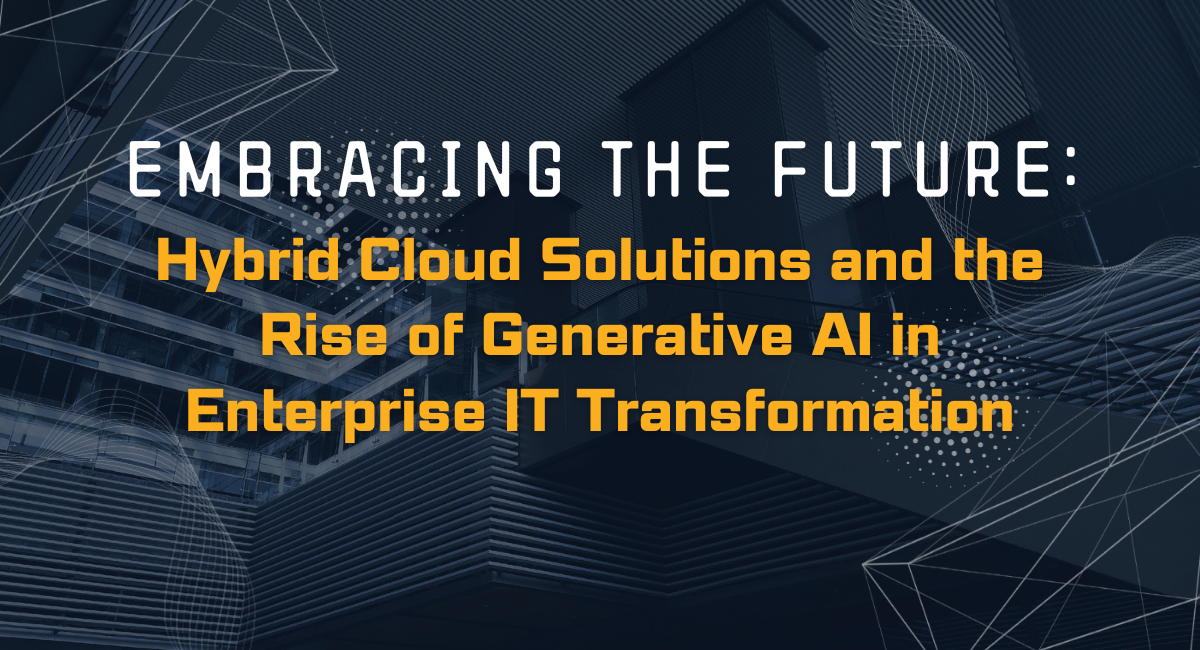IT Trends ClOs Should Watch Out for in 2024 and Why
In today’s rapidly evolving digital landscape, CIOs are steering their organisations through the complex sea of innovation and change. With technology now entwined in every thread of business fabric, it’s crucial for these IT leaders to be prophetic; anticipating shifts and skirting the icebergs of obsolescence is key to survival.
But with so many trends flickering on the horizon, determining which ones merit attention can feel like decoding a cryptic puzzle.
Here’s an interesting fact: McKinsey projects a $4.2 billion revenue generation in the global cloud microservices platform market by 2028 – that’s proof enough that cloud computing isn’t just trending; it’s reshaping entire business strategies!
Our article stands as your beacon in this digital fog, guiding you through three pivotal IT waves set to crest: slashing technical debt, blending AI into workflows, and catalyzing digital metamorphosis.
By tapping into our insights, you’ll navigate these trends and leverage them to propel your company forward. Ready for a sneak peek into the future? Keep reading – insights await!
Key Takeaways
- CIOs must adopt automation, moving beyond RPA, to seamlessly integrate automated processes throughout the IT environment for enhanced efficiency and agility.
- CIOs should focus on reducing tech debt by updating systems to prevent future problems and save money.
- Incorporating AI into business processes can speed up work, improve decisions, and help protect against cyber threats.
- Accelerating digital transformation allows businesses to adapt quickly to changes using cloud computing and other new tech.
The Importance of Watching IT Trends for CIOs
Staying on top of IT trends is key for CIOs. It helps you plan and keep your company safe. For example, as AI and ML shape our IT future, you must understand them to stay ahead. Knowing about these trends can make your systems smarter and faster.
CIOs need to watch tech like quantum computing and cybersecurity closely. This keeps your data safe from cyberattacks. With RPA, you also find ways to work more efficiently. Cloud computing is important because it can save money while growing your business’s tech abilities.
Keeping an eye on new changes ensures you’re ready for the next big thing in tech.
Automation Beyond RPA: Redefining IT Processes
CIOs in 2024 are increasingly recognising the transformative power of automation within the IT environment. While Robotic Process Automation (RPA) has been a significant player in streamlining repetitive tasks, a new wave of automation is emerging, focused on holistic integration within the entire IT ecosystem.
Automation Solutions Which are Leading the Charge
Leading the charge in this paradigm shift is Red Hat, a pioneer in open-source solutions. Red Hat’s automation solutions are gaining traction among forward-thinking CIOs looking to transcend the limitations of conventional automation.
By integrating automation seamlessly into the IT fabric, Red Hat is helping organisations achieve unprecedented levels of efficiency, agility, and scalability.
Application in the Organisation:
- Explore holistic automation solutions for end-to-end IT ecosystem integration.
- Consider platforms like Red Hat Ansible for orchestrating complex workflows.
- Ensure that automation aligns with business goals and enhances overall efficiency.
Example:
- Scenario: An organisation faces delays in infrastructure deployment.
- Application: Implement Red Hat Ansible to automate the deployment process, ensuring consistency, speed, and a reduction in the risk of human errors.
Other Key IT Trends in 2024: Beyond Automation
As we dive deep into the tech horizon, CIOs can’t afford to miss the trio of trends shaping tomorrow’s IT landscape. It’s all about shedding outdated baggage, welcoming AI as a co-worker, and propelling businesses into a digitized future—these are movements not just on the rise but pivotal for staying ahead in the digital derby.
Reducing Technical Debt
Fixing old tech problems can save you a lot of trouble later. Think about it like fixing a leaky roof before the whole house gets water damage. For CIOs and IT leaders, paying attention to technical debt means ensuring your digital tools and systems are up-to-date.
This way, everything works better, and you don’t waste time or money on big fixes down the road.
Getting rid of technical debt helps your business move faster with new projects. When your systems are clean and current, adding new features is easier. Your teams can focus on building cool stuff instead of dealing with old bugs or slow software.
Plus, keeping your tech in good shape is safer from hackers that could harm your data or systems.
Application in the Organisation
- Conduct a comprehensive assessment of existing systems and identify areas with technical debt.
- Prioritise updates based on criticality and impact on business operations.
- Implement an iterative approach, breaking down large updates into manageable phases.
Example:
- Scenario: An organisation has outdated legacy systems causing frequent disruptions.
- Application: The CIO can initiate a phased update, starting with mission-critical systems, improving stability and reducing the risk of future disruptions.
Incorporating AI into Business Processes
AI is changing how businesses work. It lets you do things faster and smarter. Think of chatbots that talk to customers for you or AI helping make quick decisions based on data. This means your company can do better and stay ahead in the market.
Putting AI into your business isn’t just about robots doing tasks; it’s about using this smart tech to find new ways to solve problems. Machine learning can help spot trends, and predictive analytics can guess what customers want next.
Leaders need to look at these tools as chances to grow their companies and keep them safe. With cybercrime on the rise, AI can also watch out for threats and protect your data from hackers.
Application in the Organisation:
- Identify processes with high automation potential, such as customer support, data analysis, and decision-making.
- Invest in AI technologies that align with organisational goals and facilitate seamless integration.
- Provide training to employees on working collaboratively with AI systems.
Example:
- Scenario: A company wants to enhance customer support efficiency.
- Application: Implement AI-driven chatbots to handle routine queries, freeing up human agents to focus on more complex customer issues and improving overall service.
Accelerating Digital Transformation
Businesses today need to move fast with technology. Digital transformation is key. It lets companies change how they work, use new tech, and keep up with the world. For CIOs, this means leading the way in using things like cloud computing and AI.
This shift includes more than just buying new tools; it changes everything from customer experience to how teams talk to each other. Tech like AI helps make services faster and smarter.
Cloud platforms let businesses grow without big costs for new hardware. By moving quickly into digital, companies can stay ahead and make better products for their customers.
Application in the Organisation:
- Embrace cloud computing solutions for scalability and flexibility.
- Foster a culture of adaptability and continuous learning to ease the transition.
- Invest in technologies that enhance collaboration and communication.
Example:
- Scenario: An organisation aims to improve collaboration among remote teams.
- Application: Adopt cloud-based collaboration tools, enabling real-time communication and document sharing, fostering a collaborative work environment.
The Impact of These Trends on Businesses
Understanding these IT trends isn’t just about staying current; it’s a strategic move—keeping businesses agile, innovative, and ahead of the curve. Dive deeper to see how they can revolutionize your operation from the ground up.
Improving efficiency and competitiveness
Teams that use the latest IT trends can work faster and smarter. This helps them beat others to new ideas and solutions. For example, by adopting artificial intelligence (AI) in business processes, companies can do tasks without making mistakes and learn from data to improve over time.
With machines handling routine jobs, employees focus on complex problems where they shine.
Another big change is eliminating old tech systems that slow things down. Instead, using new cloud services lets businesses grow without a hitch and manage costs better. When you move fast with top-notch tools, customers notice and like your service more.
They stick around longer, which means more money for your business in the long run!
Enhancing customer engagement
Tech trends are changing how companies talk and listen to their customers. With tools like AI, businesses can give each customer a special experience. They use chatbots that learn over time to answer questions quickly.
Companies also analyse data to know what customers want before they even ask.
These new techs make shopping easy and fun for people. Customers can tell companies what they think using the internet or phone apps. This helps businesses improve at making customers happy, which is good for everyone.
Empowering employees
Empowering employees means giving them the tools and skills they need to do their jobs better. With IT trends like artificial intelligence (AI) and robotic process automation (RPA), workers can focus on creative tasks instead of routine ones.
This shift helps them become more valuable to your company. They solve problems faster and come up with new ideas because the boring stuff is automated.
By using AI technology, you make it easier for people to work from anywhere. They can access data and systems in the cloud whenever they need to. This flexibility is great for staff who want a better work-life balance or live far from the office.
Happy employees often stay longer at their jobs, saving you time and money on finding new people.
Challenges and Opportunities of Embracing These Trends
As CIOs navigate the evolving IT landscape, they confront a duality—challenges such as heightened security concerns and widening skill gaps beckon a strategic response, while simultaneously, untapped potential for transformative innovation and growth awaits those ready to embrace these emerging trends with agility and foresight.
Security concerns
Security concerns are big for CIOs and IT leaders. Hackers often break into systems to steal data or cause trouble. Companies must protect their information from these cyber criminals.
This means using strong cybersecurity measures.
Ransomware attacks are one type of danger where hackers lock files and ask for money. Phishing is another, where fake emails trick people into giving away secrets. Both risks can hurt a business a lot.
New trends like AI, the Internet of Things (IoT), and cloud computing come with more security worries too. Each time companies use new tech, they must check for holes that could let in bad guys.
CIOs should always be ready to fight these dangers with good plans and tools. It’s important because safe systems keep businesses running well without trouble.
Skill gaps
Skill gaps are a big challenge when businesses adopt new IT trends. As tech changes, workers need to learn new skills. This is tough because there isn’t always enough training or people who know about the latest technologies like AI, cybersecurity, and quantum computing.
Companies might find they don’t have the right experts to use these technologies well.
To fix this, companies should help their teams get better at these skills. They could work with schools or have training programs. This way, employees can keep up with changes in artificial intelligence, cloud computing, and cyber safety measures.
It’s also good for business growth and staying ahead of other companies. Plus, when your team knows more about tech trends like 5G technology or edge computing, they can do their jobs better and come up with new ideas.
Potential for innovation and growth
Embracing new IT trends can unlock doors to exciting changes. For example, Artificial Intelligence (AI) is not just a buzzword; it’s reshaping how we work and think. CIOs who blend AI into their companies can see tasks get faster and smarter.
This move opens up space for more creativity among teams. Picture your business using AI to know what customers want before they ask.
Growth looks bright when you mix tech like machine learning, the metaverse, and cloud microservices. Reports show that these areas are expected to create big money by 2028—one report predicts $4.2 billion from cloud microservices alone! Think of the chance here to build more flexible services, solutions that scale fast, and platforms where teams collaborate from anywhere in the world.
Companies ready to dive into these trends could find themselves leading their markets with innovative products no one has seen yet.
Conclusion
Keeping an eye on IT trends is like watching the road ahead while driving – it keeps businesses safe and headed in the right direction. Artificial intelligence, cybersecurity, and cloud computing are changing how we work and live.
They offer chances to be faster, smarter, and safer online. As these tech waves come in, CIOs must surf them to lead their teams toward success.
Stay alert, stay informed; the future of IT waits for no one!
————–
Systemizer Technic can help you to navigate IT waters with our range of services designed to support and enhance your internal IT systems. Contact us for any enquiries at hello@systemizerinc.com



